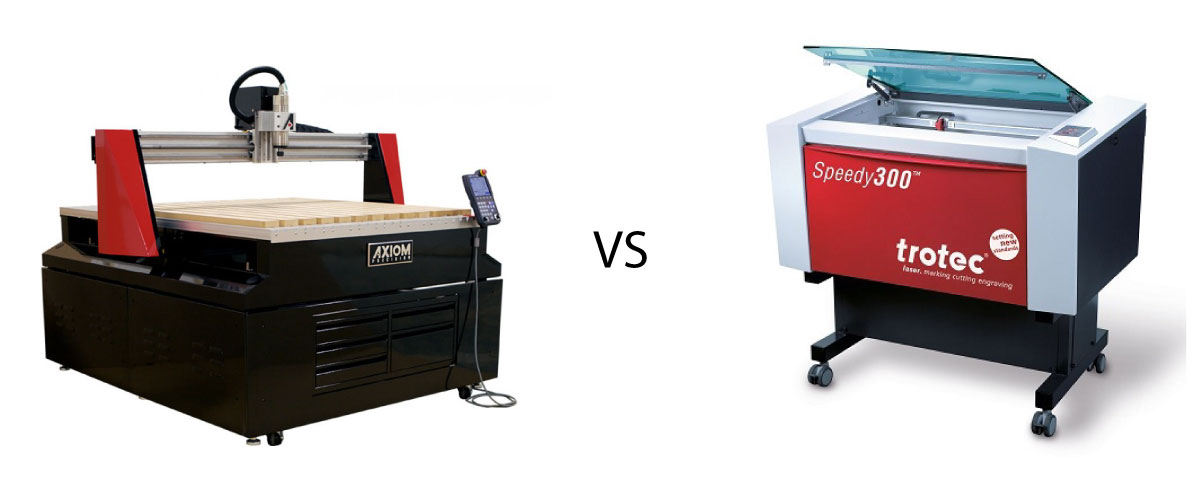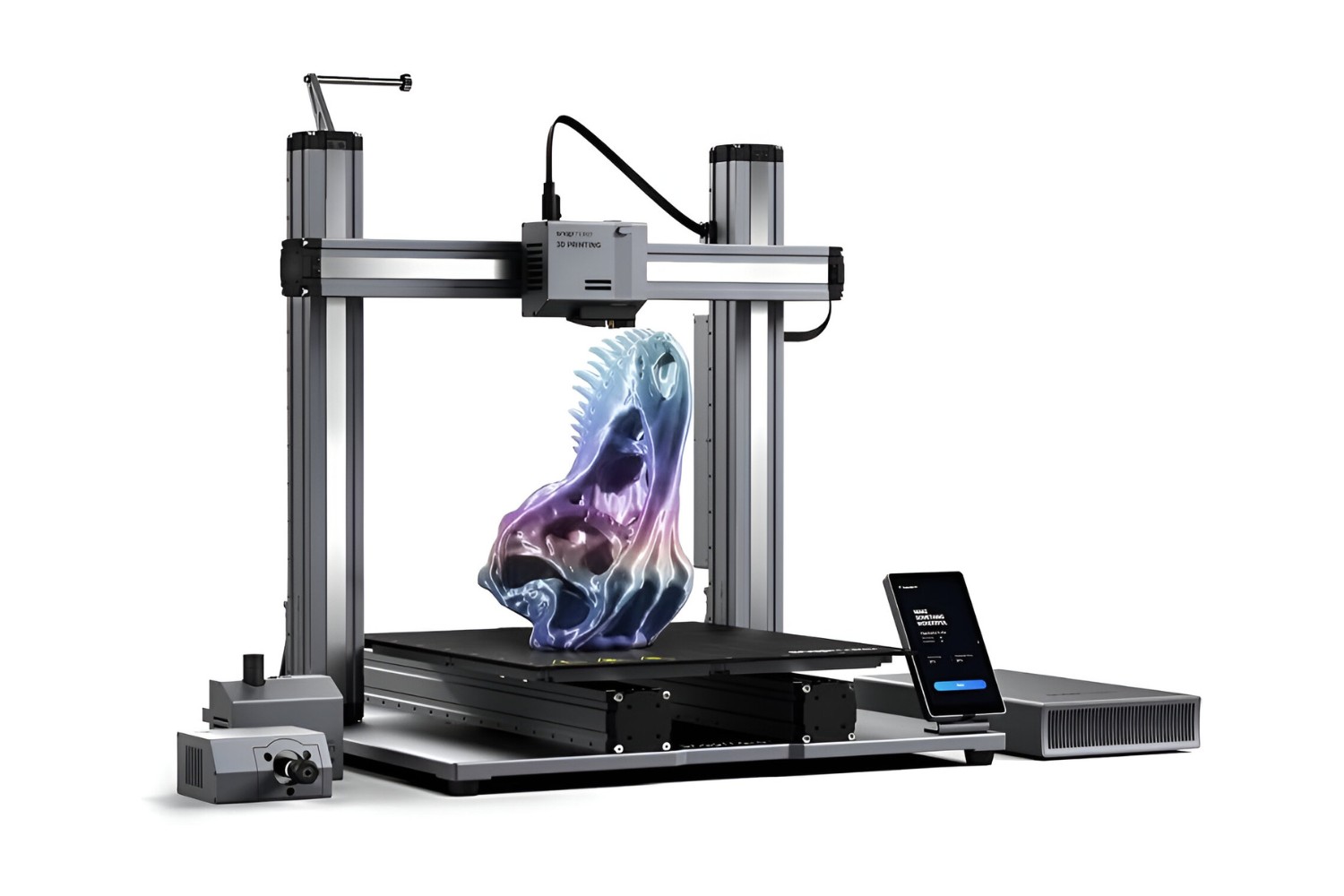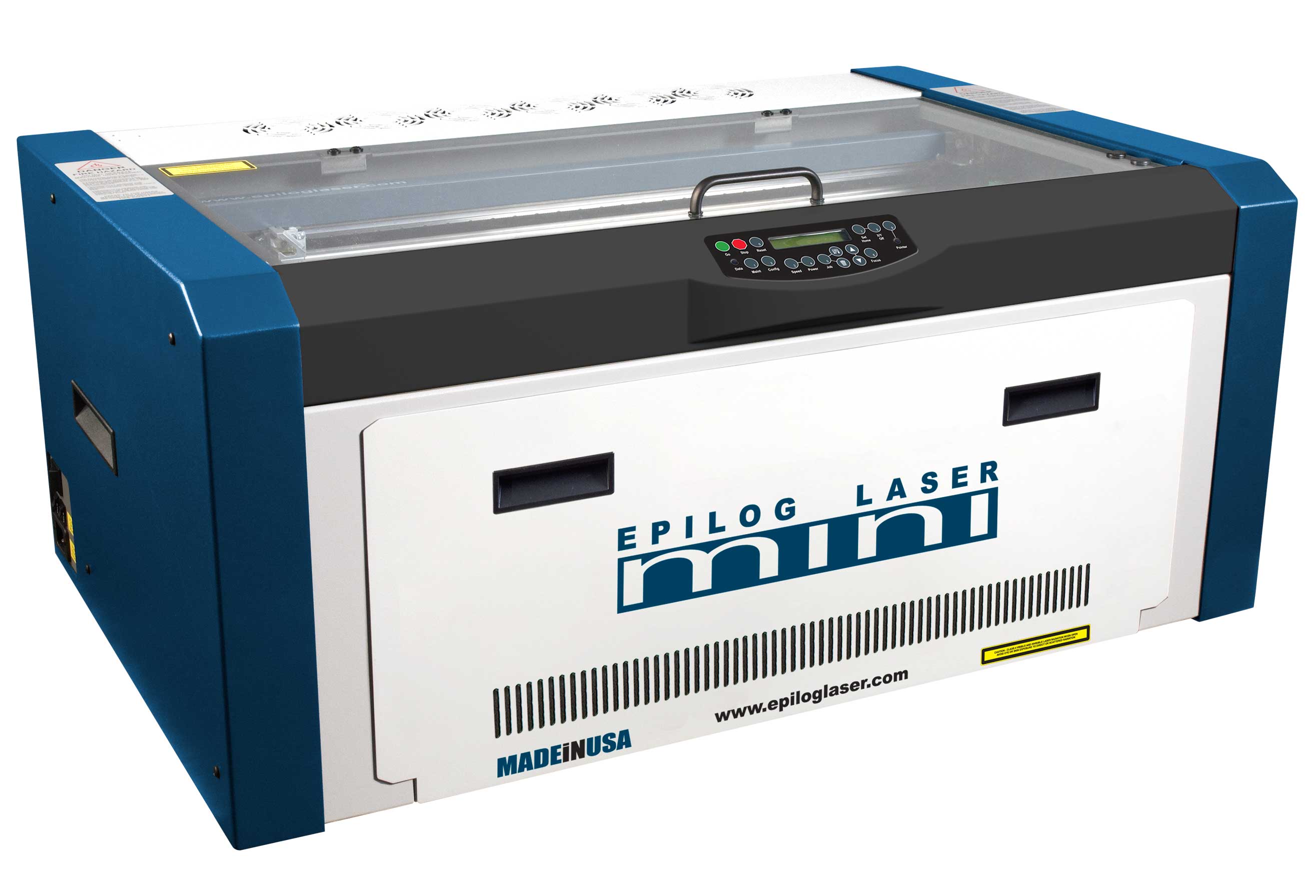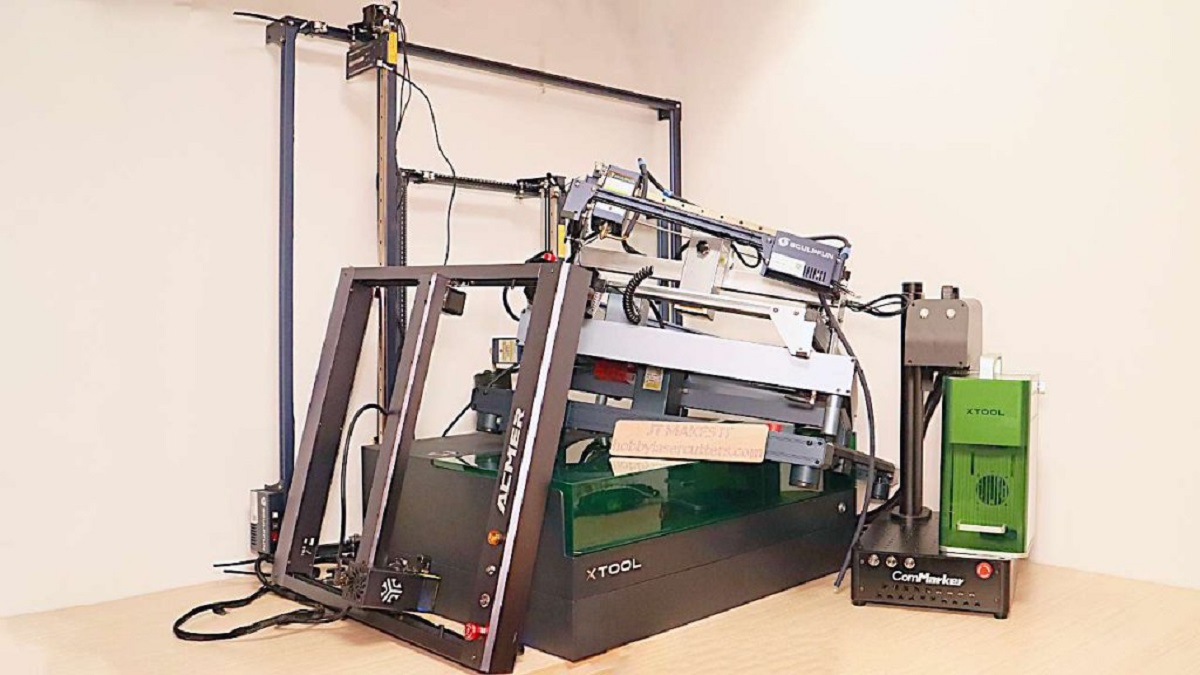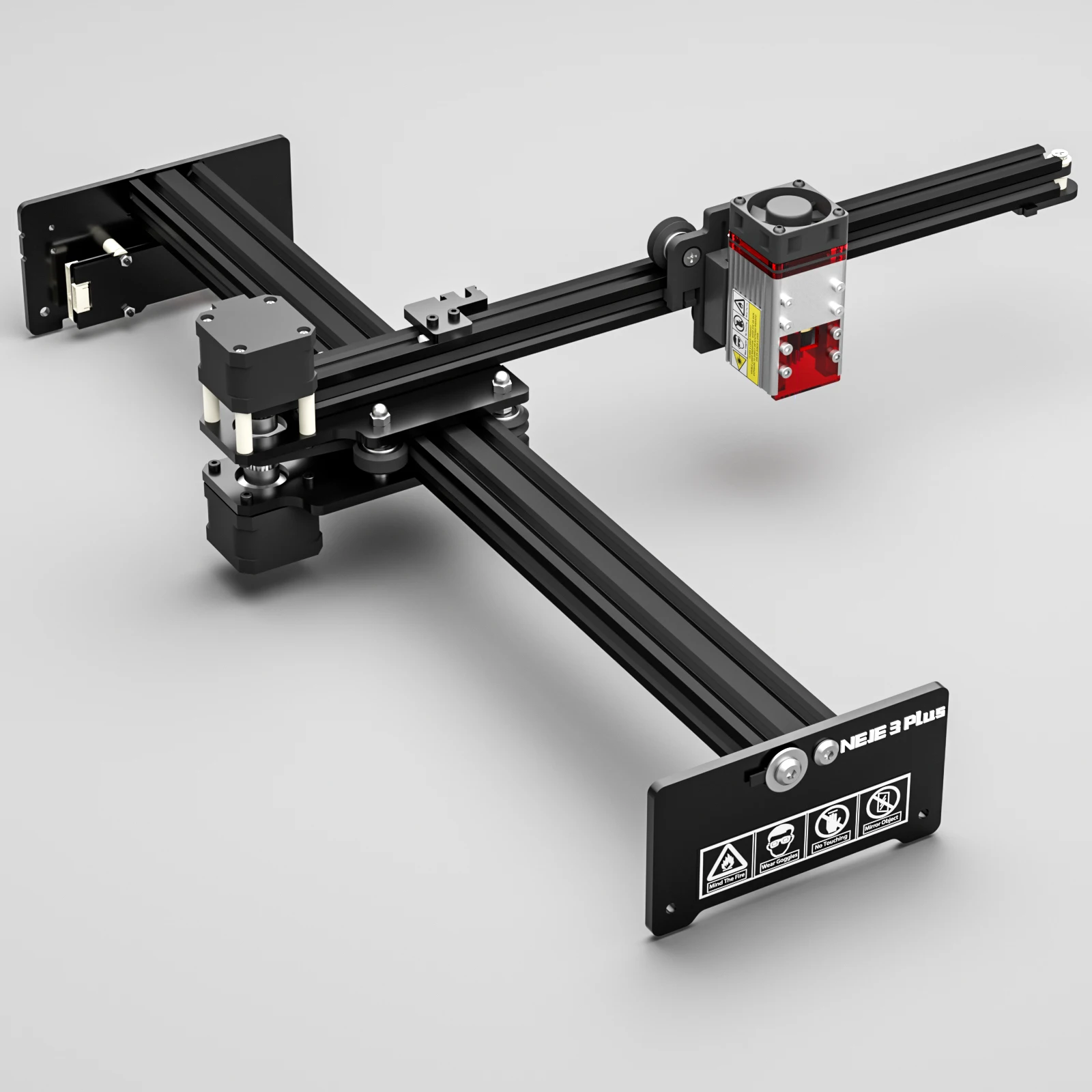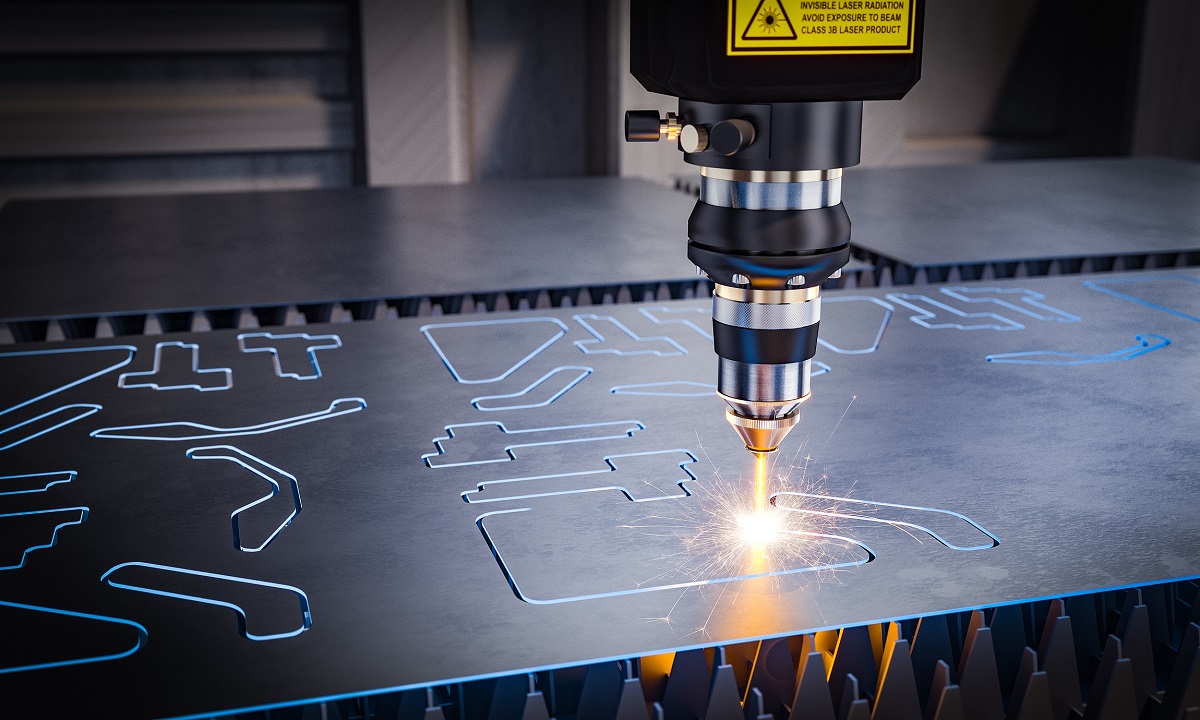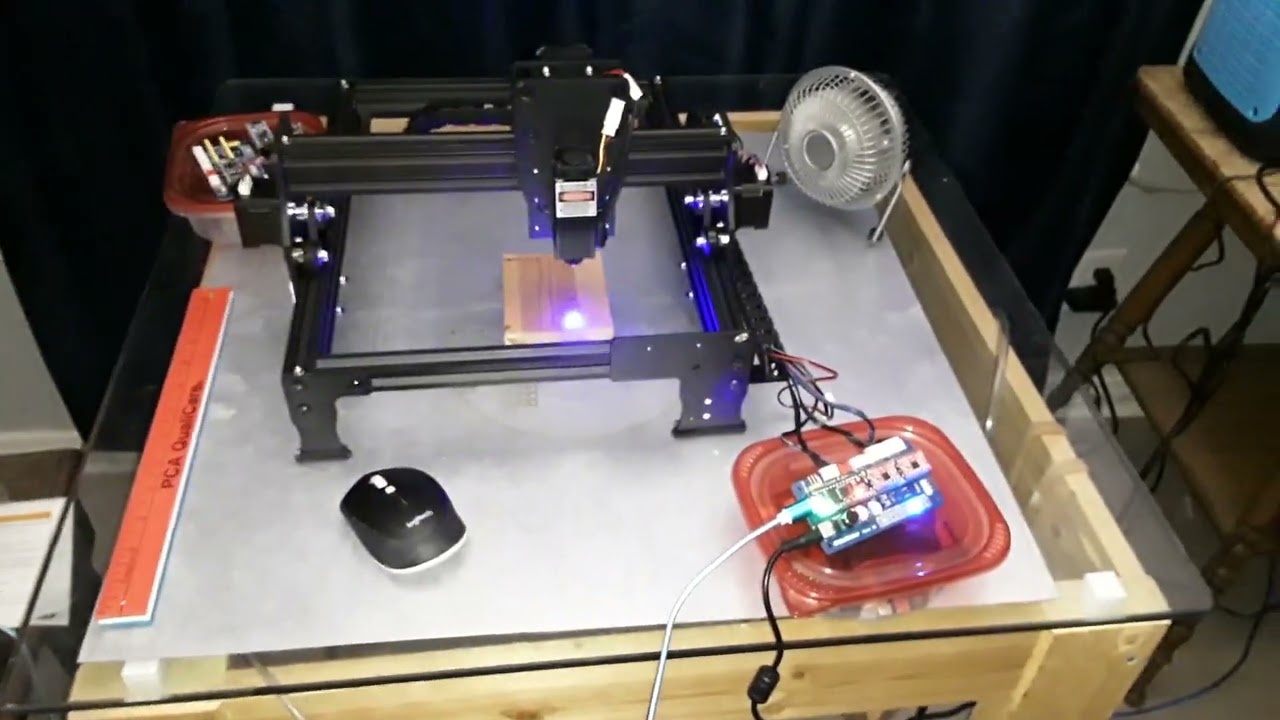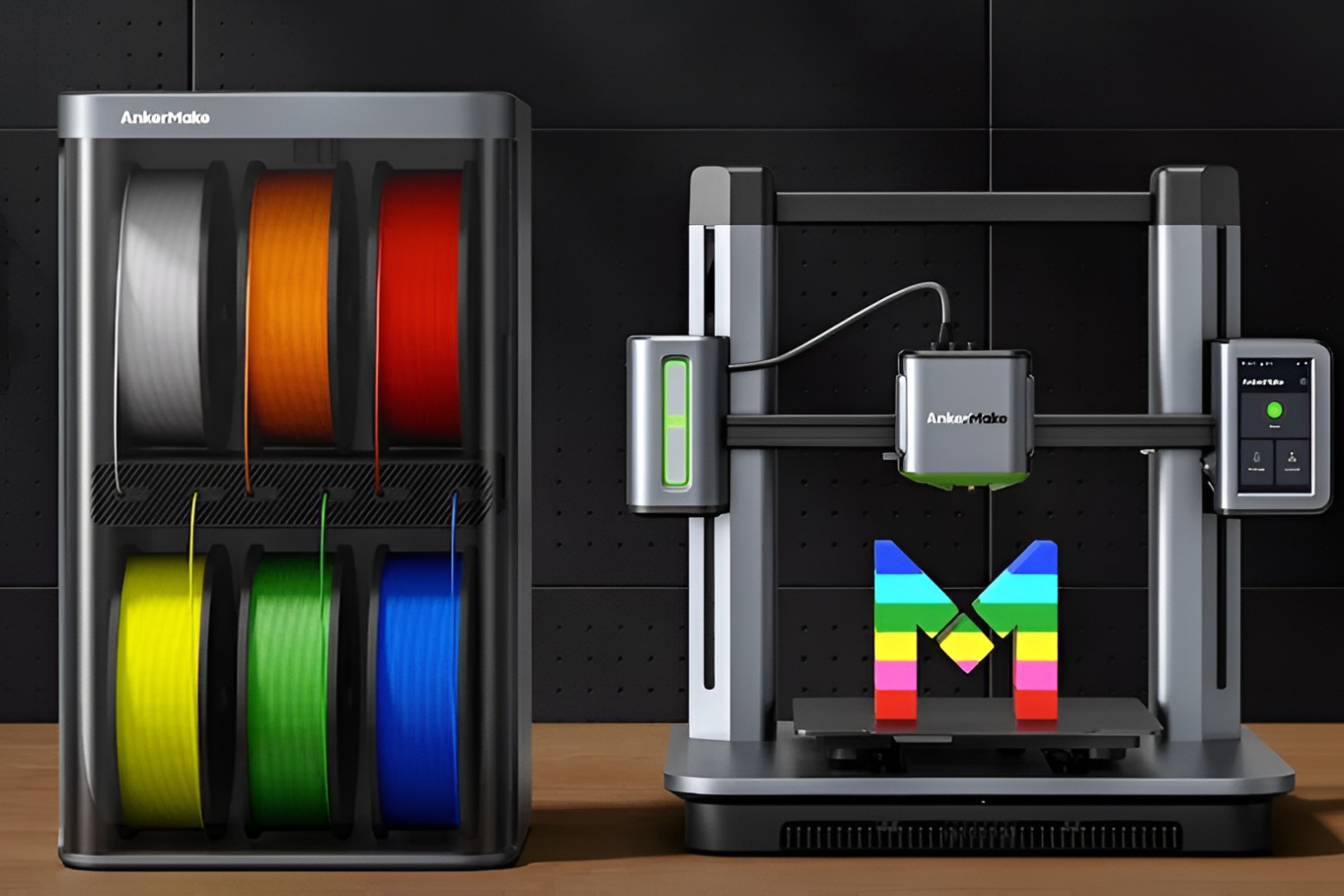Introduction
Welcome to the world of precision and craftsmanship! When it comes to creating intricate designs and patterns on various materials, two powerful tools stand out – the laser engraver and the CNC machine. These devices have revolutionized the art of engraving, offering unparalleled precision and efficiency. Whether you’re a hobbyist, artist, or small business owner, understanding the difference between these two machines is crucial in determining which one will best suit your needs.
Both the laser engraver and the CNC machine are widely used in industries such as manufacturing, woodworking, jewelry making, signage, and more. While they may share similarities in terms of their applications, each device operates using distinct principles and offers unique capabilities. This article will delve into the functionalities, working principles, types, and key differences between laser engravers and CNC machines, providing you with valuable insights to make an informed decision.
Before we dive into the specifics, it’s essential to have a clear understanding of what laser engravers and CNC machines actually are. Once we have a solid foundation of knowledge, we can explore their respective working mechanisms, applications, and factors to consider when choosing between them. So, let’s embark on this enlightening journey and uncover the fascinating world of laser engravers and CNC machines!
Definition of a Laser Engraver
Imagine having a precision tool that can etch exquisite designs, logos, and text onto various materials with remarkable accuracy and finesse. That’s exactly what a laser engraver is designed to do. A laser engraver is a computer-controlled machine that utilizes a high-powered laser beam to meticulously engrave or etch patterns, images, or text onto surfaces.
The laser beam emitted by the engraving machine is focused to an incredibly small point, allowing for intricate and detailed designs. The laser engraver operates by removing material from the surface of the object, creating a permanent mark. It can work on a wide range of materials such as wood, acrylic, leather, glass, and metal, making it a versatile tool for various applications.
Laser engravers are equipped with a laser module, a control system, and a software program that enables users to input their desired designs. The control system precisely directs the laser beam based on the design specifications, resulting in accurate and consistent engraving. The software allows for customization, adjusting parameters such as power, speed, and intensity to achieve the desired effect.
One of the key advantages of laser engravers is their ability to produce highly detailed and complex designs with extreme precision. They can engrave at various depths, creating different effects, such as shallow surface etching or deep engraving. This versatility makes them popular in industries such as jewelry making, personalized gifts, signage production, and product branding.
It is important to note that laser engravers come in different sizes and power capacities. Small desktop versions are suitable for personal use or small-scale businesses, while larger industrial models offer higher power and can handle larger workpieces. The choice of the laser engraver depends on the intended application and the materials you plan to work with.
Definition of a CNC Machine
A CNC (Computer Numerical Control) machine is a sophisticated piece of equipment that uses computer programming to control the movement and operation of a cutting or carving tool. Unlike a laser engraver, which uses a focused laser beam for etching, a CNC machine utilizes various cutting tools, such as drills, routers, or mills, to remove material from a workpiece and create precise shapes or designs.
The CNC machine operates based on a set of instructions programmed into the computer system. These instructions dictate the coordinates, speed, and depth of the cutting tools, allowing for accurate and consistent results. The program can be created using specialized software or through manual coding, giving users the flexibility to design and create a wide range of products.
One of the key advantages of CNC machines is their versatility. They can cut, mill, carve, or drill into materials such as wood, plastic, metal, and even foam. This makes them indispensable tools in industries ranging from woodworking and metal fabrication to prototyping and manufacturing. With a CNC machine, complex designs, intricate patterns, and precise components can be produced with ease.
CNC machines come in various configurations, including CNC routers, CNC mills, and CNC lathes, each optimized for specific applications. CNC routers are commonly used in woodworking, signage production, and prototyping, while CNC mills excel at precision machining of metal components. CNC lathes are designed for cylindrical or rotational parts, making them ideal for the production of shafts, bolts, and other round objects.
Another notable feature of CNC machines is their ability to automate the manufacturing process. Once the program is set, the CNC machine can run continuously, reducing the need for constant manual intervention. This not only improves productivity but also ensures consistency and accuracy in the final products.
It’s worth mentioning that CNC machines come in different sizes and configurations to accommodate different production needs. From compact desktop models suitable for hobbyists to large industrial machines for mass production, there are CNC machines available to suit a wide range of budgets and requirements.
Working Principle of a Laser Engraver
The working principle of a laser engraver revolves around the use of a high-powered laser beam to remove material from the surface of an object and create precise engravings. It is a highly controlled and precise process that allows for intricate designs and fine detailing.
At the heart of a laser engraver is the laser module, which consists of a laser diode that emits a concentrated beam of light. The laser beam is focused onto the surface of the material using a lens or a mirror system. The focused laser beam is incredibly powerful and can vaporize or burn away the material it comes into contact with.
The laser engraver is controlled by a computer system that runs specialized software. This software enables users to input their desired designs and specify parameters such as power, speed, and depth. The laser engraver then follows the instructions provided by the software, directing the laser beam to the exact locations on the material’s surface.
As the laser beam interacts with the material, it heats up and vaporizes the surface layer, creating a visible mark, such as an engraving or etching. The depth and intensity of the engraving can be adjusted by controlling the power and speed of the laser beam. This level of control allows for precise customization and ensures consistent results.
The materials that can be engraved using a laser engraver are diverse, ranging from wood and acrylic to glass, leather, and even metals. The ability to engrave on such a wide variety of materials makes laser engravers highly versatile. However, it is worth noting that different materials have varying responses to the laser beam, requiring adjustments in power and speed settings.
One important aspect of laser engraving is the focus of the laser beam. The laser beam must be properly focused to achieve optimum engraving results. Achieving the correct focus ensures that the laser beam is at its most intense, resulting in precise and well-defined engravings.
In some cases, the laser engraver may also utilize additional technologies, such as air assist or exhaust systems, to improve the engraving process. Air assist helps to clear away debris and prevent heat buildup, while an exhaust system removes fumes and particles generated during the engraving process.
Overall, the working principle of a laser engraver involves the precise control of a high-powered laser beam to remove material and create intricate designs. The combination of computer control, focused laser beam, and adjustable parameters allows for exceptional precision and versatility in the engraving process.
Working Principle of a CNC Machine
The working principle of a CNC (Computer Numerical Control) machine involves the use of computer programming to control the movement and operation of cutting tools. CNC machines can perform a wide range of operations such as cutting, carving, drilling, and milling with exceptional accuracy and precision.
The operation of a CNC machine begins with the creation of a computer program that contains a series of instructions. These instructions specify the desired coordinates, speed, and depth of the cutting tools. The program can be created using specialized software or manually coded, depending on the complexity of the design.
Once the program is loaded into the CNC machine, it interprets the instructions and controls the movement of the cutting tools. The machine consists of axes, which are mechanical systems responsible for the movement in different directions. These axes can be linear or rotary, allowing for three-dimensional movement.
The control system of the CNC machine precisely directs the movement of the cutting tools along the specified path, resulting in accurate and consistent cuts or carvings. The cutting tools can include drills, mills, routers, or even lasers, depending on the type of CNC machine and the desired operation.
During operation, the cutting tools remove material from the workpiece based on the programmed instructions. The cutting tools can rotate, move along different axes, and be adjusted for speed and depth. This versatility allows CNC machines to create complex and intricate designs with ease.
CNC machines use various mechanisms to ensure precise positioning and movement. They may employ ball screws, linear guides, rack and pinion drives, or belt-driven systems. These mechanisms work in conjunction with powerful servo motors to control the movement of the cutting tools accurately.
One of the advantages of a CNC machine is that it can operate continuously once the program is set. This eliminates the need for constant manual intervention, improving productivity and reducing errors. The CNC machine can also repeat operations with consistent precision, ensuring high-quality results for each workpiece.
Furthermore, CNC machines can be equipped with additional features such as tool changers, automatic workpiece clamping systems, and coolant systems. These features enhance efficiency and facilitate seamless operation, especially in industrial settings.
It’s important to note that CNC machines require regular maintenance and calibration to ensure optimal performance. Routine checks and adjustments are necessary to maintain the accuracy and reliability of the machine.
In summary, the working principle of a CNC machine involves the use of computer programming to control the movement and operation of cutting tools. Precise and accurate instructions, coupled with advanced mechanical systems, allow for the creation of intricate designs and precise cuts in a wide range of materials.
Types of Laser Engravers
Laser engraving technology has evolved over the years, leading to the development of various types of laser engravers. These different types offer specific features and capabilities, catering to a wide range of applications and user requirements. Let’s explore some of the common types of laser engravers:
- CO2 Laser Engravers: CO2 laser engravers are the most common type of laser engraving machines. They utilize a high-powered CO2 laser tube that produces a laser beam with a wavelength of around 10.6 micrometers. These machines are versatile and can engrave on a wide range of materials, including wood, acrylic, leather, glass, and some metals. CO2 laser engravers are popular in industries such as signage, woodworking, and personalized gifts.
- Fiber Laser Engravers: Fiber laser engravers are specifically designed for engraving on metal surfaces. They utilize a fiber laser source that produces a laser beam with a wavelength of approximately 1 micrometer. This wavelength is highly absorbed by metals, making fiber laser engravers ideal for marking and engraving on materials like stainless steel, aluminum, brass, and more. These machines are widely used in industries such as jewelry making, automotive, and aerospace.
- Diode Laser Engravers: Diode laser engravers are compact and portable machines that use semiconductor diodes to generate a laser beam. They are often designed for personal or small-scale use and are suitable for engraving on materials like wood, acrylic, leather, and certain plastics. Diode laser engravers are known for their affordability and ease of use, making them popular among hobbyists and small business owners.
- Green Laser Engravers: Green laser engravers utilize a crystal-based system to produce a green laser beam with a wavelength of around 532 nanometers. Green lasers are highly visible and are particularly useful for precise engraving and marking applications. These machines can be used on various materials, including wood, plastics, stone, and more. Green laser engravers are often utilized in industries such as jewelry making and electronics.
- UV Laser Engravers: UV laser engravers offer a high-precision engraving solution, particularly for delicate or heat-sensitive materials. These machines generate a laser beam with a wavelength in the ultraviolet range, typically around 355 nanometers. UV laser engravers are suitable for engraving on materials such as glass, ceramics, and certain plastics. They find applications in industries such as electronics, medical devices, and automotive.
It’s important to consider the specific requirements of your project when choosing a laser engraver. Factors such as the type of material, desired level of detail, production volume, and budget will all play a role in determining the most suitable type of laser engraver for your needs.
Types of CNC Machines
CNC (Computer Numerical Control) machines come in various types, each designed to excel in specific applications and industries. These machines utilize computer programming to control the movement and operation of cutting tools, allowing for precise and accurate machining. Let’s explore some common types of CNC machines:
- CNC Router: CNC routers are versatile machines widely used in woodworking, sign-making, and prototyping. They utilize cutting tools such as routers and drills to carve, shape, and cut various materials. CNC routers are capable of creating intricate designs and can work on materials like wood, plastic, foam, and even some metals.
- CNC Milling Machine: CNC milling machines are designed for precision machining of solid materials, particularly metals. These machines employ rotary cutting tools to remove material and create complex shapes or features. CNC milling machines are often used in industries such as automotive, aerospace, and manufacturing, where high precision and tight tolerances are required.
- CNC Lathe: CNC lathes are specialized machines used for cylindrical or rotational parts. They rotate the workpiece while a single-point cutting tool shapes the material. CNC lathes are commonly used in the production of shafts, bolts, bushings, and other cylindrical components. They are prevalent in industries such as automotive, aerospace, and metal fabrication.
- CNC Plasma Cutter: CNC plasma cutters are used for precision cutting of metal sheets using a plasma torch. The plasma torch generates a high-temperature plasma arc that melts and cuts through the metal. CNC plasma cutters are ideal for industries such as metal fabrication, automotive, and shipbuilding.
- CNC Laser Cutter: CNC laser cutters utilize lasers as cutting tools to precisely slice through various materials. Laser cutters are capable of cutting intricate designs on materials like metal, wood, acrylic, and fabric. They are widely used in industries such as signage, architectural models, and industrial manufacturing.
Each type of CNC machine offers specific advantages and capabilities. When choosing a CNC machine, consider factors such as the materials you will be working with, the type and complexity of the designs you want to create, production volume, and budget. By selecting the appropriate CNC machine for your specific needs, you can ensure efficient and accurate machining operations.
Applications of Laser Engravers
Laser engravers have a wide range of applications across various industries, thanks to their versatility and precision. From personal projects to industrial production, laser engravers are capable of creating intricate designs and markings on various materials. Let’s explore some key applications of laser engravers:
- Personalization and Gifts: Laser engravers are commonly used for personalizing items such as jewelry, phone cases, keychains, and trophies. Engraving initials, names, or custom designs adds a personal touch and makes these items unique gifts or keepsakes.
- Product Branding: Laser engraving is an effective way to brand products with logos, serial numbers, or important information. This is especially useful for industries such as electronics, automotive, and appliances.
- Woodworking: Laser engravers are extensively used in the woodworking industry for creating intricate designs, patterns, or text on wooden furniture, decorations, and accessories. They provide precise cuts and engravings on various types of wood.
- Signage Production: Laser engravers play a crucial role in creating high-quality signs, both for indoor and outdoor use. They are capable of engraving text, images, and even complex designs onto materials such as acrylic, wood, and metal.
- Jewelry Making: Laser engravers offer precise and intricate engraving capabilities for jewelry items, allowing for customized designs, personalization, and adding unique patterns or textures to rings, bracelets, pendants, and more.
- Medical and Surgical Instruments: Laser engraving is used to mark medical instruments, such as surgical tools and implants, with identification codes, logos, or measurement indicators. This ensures traceability and provides essential information during medical procedures.
- Personal Electronics: Laser engravers can add serial numbers or unique identifiers to electronic devices, such as smartphones, tablets, and laptops. This helps with inventory management, tracking, and anti-counterfeiting measures.
- Glassware and Drinkware: Laser engravers are employed to etch designs or logos onto glassware, such as wine glasses, mugs, and bottles. This enhances the visual appeal and creates customized drinkware for special occasions or promotional purposes.
- Art and Crafts: Laser engravers enable artists and crafters to create intricate designs, patterns, or textures on a wide variety of materials. From creating detailed artwork on paper to adding unique designs to leather or fabric, laser engravers open up new possibilities for artistic creations.
These are just a few examples of the diverse applications of laser engravers. As technology advances, new possibilities continue to emerge in various industries, making laser engraving a versatile and indispensable tool in today’s creative and manufacturing processes.
Applications of CNC Machines
CNC (Computer Numerical Control) machines have revolutionized the manufacturing industry, providing immense capabilities for precision machining and automation. These versatile machines find applications across a wide range of industries, allowing for efficient and accurate production. Let’s explore some key applications of CNC machines:
- Automotive Industry: CNC machines play a critical role in the production of automotive parts and components. From engine blocks to transmission components, CNC machining ensures precise dimensions and tight tolerances, resulting in high-quality and reliable parts.
- Aerospace Industry: CNC machines are extensively used in the aerospace industry for manufacturing complex and lightweight components like turbine blades, engine parts, and structural components. The accuracy and repeatability of CNC machining ensure the highest quality standards required in aerospace applications.
- Prototyping: CNC machines excel in rapid prototyping, allowing designers and engineers to quickly create functional prototypes and test their designs before mass production. CNC machines can accurately reproduce complex shapes and geometric features, facilitating the development and refinement of new products.
- Woodworking and Furniture: CNC routers find wide applications in the woodworking industry for cutting, carving, and shaping wood materials. They are used to create intricate designs, furniture components, cabinet doors, and decorative elements with high precision and efficiency.
- Metal Fabrication: CNC milling machines and lathes are key tools in metal fabrication, where they are used to create precision metal parts, fittings, and hardware for various industries. From custom brackets to complex metal components, CNC machines offer high accuracy and fast production times.
- Medical Equipment: CNC machines are extensively employed in the medical industry for the production of medical devices and equipment. From intricate surgical instruments to prosthetics and implants, CNC machining ensures precise dimensions and exceptional quality for critical medical applications.
- Electronics Manufacturing: CNC machines are used to create housings, panels, and components for electronic devices. They can accurately cut and mill circuit boards, ensuring precise dimensions for the placement of components and facilitating efficient electronic assembly.
- Custom Metal Works: CNC machines are instrumental in creating custom metal works, such as ornamental gates, architectural elements, and custom metal artwork. The precision and versatility of CNC machines allow for intricate designs and the efficient machining of metals to bring these creations to life.
- Plastic Injection Molding: CNC machines are used to create molds for plastic injection molding. These molds are crucial for mass-producing plastic parts with precise dimensions and complex geometries. CNC machining offers the speed and accuracy required to produce high-quality molds.
These are just a few examples of the wide range of applications where CNC machines excel. From automotive and aerospace industries to woodworking, electronics, and custom fabrication, CNC machines provide unmatched capabilities for precise and efficient production across various sectors.
Key Differences Between Laser Engravers and CNC Machines
Although laser engravers and CNC (Computer Numerical Control) machines are both used for precision machining and creating intricate designs, they operate on different principles and offer unique capabilities. Let’s explore the key differences between laser engravers and CNC machines:
- Working Principle: Laser engravers utilize a high-powered laser beam to remove material from the surface and create engravings, while CNC machines use computer programming to control the movement and operation of cutting tools, such as drills, mills, and routers.
- Engraving vs. Machining: Laser engravers are specifically designed for engraving, etching, and marking surfaces, offering exceptional precision and versatility for creating detailed designs. On the other hand, CNC machines are capable of performing a wider range of operations, including cutting, carving, drilling, and milling, making them suitable for various machining applications.
- Materials: Laser engravers can work on a diverse range of materials, such as wood, acrylic, glass, leather, and some metals, thanks to the use of a focused laser beam. CNC machines, depending on the type, can handle materials like wood, metal, plastic, foam, and even stone, providing versatility in machining processes.
- Applications: Laser engravers find applications in industries such as personalization and gifts, product branding, woodworking, signage production, jewelry making, and more. CNC machines are used in industries like automotive, aerospace, woodworking, metal fabrication, prototyping, and electronics manufacturing, offering a broader range of applications.
- Automation: CNC machines excel in automation, allowing for continuous operation once the program is set. This reduces the need for constant manual intervention and improves production efficiency. Laser engravers, while capable of automation to some extent, are primarily controlled by operators for design adjustments, material positioning, and focusing purposes.
- Complexity of Designs: Laser engravers excel in creating highly detailed and intricate designs, thanks to the fine laser beam and precise control over engraving parameters. CNC machines are capable of machining complex shapes and contours, but may not achieve the same level of intricate detailing as laser engravers.
- Cost and Size: Laser engravers, especially small desktop models, are generally more affordable and require less space compared to CNC machines, which can be larger and come with a higher price tag. The choice of the machine depends on the intended application, production volume, and budget.
Understanding these key differences between laser engravers and CNC machines is essential in determining which machine is best suited for specific needs. Laser engravers offer exceptional precision and versatility for engraving and marking, while CNC machines provide broader machining capabilities for cutting, carving, and milling operations.
Factors to Consider When Choosing Between a Laser Engraver and a CNC Machine
When deciding between a laser engraver and a CNC (Computer Numerical Control) machine, several factors should be taken into consideration to ensure the selection aligns with your specific needs and requirements. Here are some key factors to consider:
- Intended Application: Determine the primary purpose of the machine. If you primarily need engraving, etching, and marking capabilities, a laser engraver may be the better choice. If you require a wider range of machining operations like cutting, carving, and drilling, a CNC machine may be more suitable.
- Materials: Consider the types of materials you will be working with. Laser engravers can work on various materials, including wood, acrylic, glass, leather, and certain metals. CNC machines are capable of machining materials like wood, metal, plastic, foam, and stone. Ensure the machine you choose is compatible with the materials you plan to work with.
- Complexity and Detail: Evaluate the level of complexity and detail required for your projects. Laser engravers excel in creating intricate and detailed designs, offering exceptional precision. CNC machines, while capable of producing complex shapes, may have limitations when it comes to intricate detailing.
- Production Volume: Consider the volume of work you anticipate. If you require mass production or need to produce a large number of identical parts, a CNC machine may offer faster and more efficient production. Laser engravers may be more suitable for smaller-scale projects or personalized items.
- Budget: Evaluate your budget as laser engravers and CNC machines vary in cost. Laser engravers, especially smaller desktop versions, are generally more affordable compared to CNC machines, which can range from moderate to high cost depending on the size and capabilities.
- Space Availability: Consider the available space in your workshop or workspace. Laser engravers, particularly smaller models, require less space compared to CNC machines, which can be larger and require sufficient room for the machine as well as material handling.
- Automation: Assess your need for automation and workflow efficiency. CNC machines excel in automation, allowing for continuous operation once the program is set. Laser engravers may require more manual intervention for design adjustments, material positioning, and focusing.
- Training and Expertise: Consider your level of familiarity and expertise with the technology. Laser engravers are generally easier to learn and operate, making them accessible to beginners and hobbyists. CNC machines may require a steeper learning curve and more extensive training to fully utilize their capabilities.
By carefully considering these factors, you can select the machine that best suits your needs, whether it’s a laser engraver for precise engraving and marking, or a CNC machine for broader machining capabilities. Assessing your intended application, materials, budget, and other relevant factors will help ensure a successful investment in the right machine for your specific requirements.
Conclusion
Choosing between a laser engraver and a CNC (Computer Numerical Control) machine depends on several factors, including the intended application, materials, complexity of designs, production volume, budget, space availability, automation needs, and level of expertise. Both these machines offer unique capabilities and excel in different areas.
Laser engravers are ideal for precise engraving, etching, and marking, offering exceptional detailing and versatility on various materials. They are commonly used in industries such as personalization, product branding, woodworking, signage production, jewelry making, and more.
On the other hand, CNC machines provide broader machining capabilities, including cutting, carving, drilling, and milling operations. CNC machines find applications in industries such as automotive, aerospace, woodworking, metal fabrication, prototyping, and electronics manufacturing. They excel in high-volume production, automation, and the creation of complex parts and components.
Consideration of factors such as intended application, materials, complexity, production volume, budget, space, automation, and expertise is crucial in making an informed decision. It is essential to evaluate your specific needs and requirements to choose the machine that aligns best with your projects.
Whether you opt for a laser engraver or a CNC machine, both technologies have revolutionized precision machining, allowing for remarkable creativity and efficiency. Embrace the opportunities offered by these machines and unleash your artistic or manufacturing potential, taking your projects to new heights of precision and craftsmanship.







